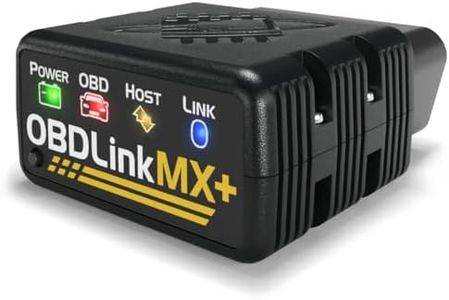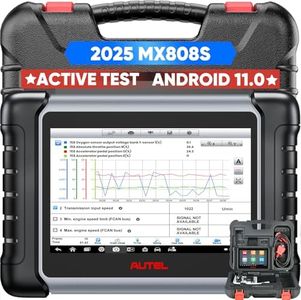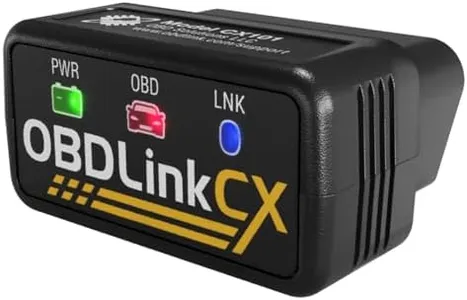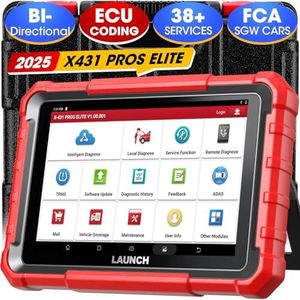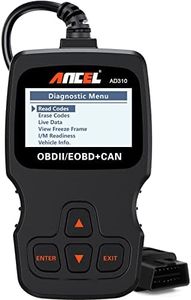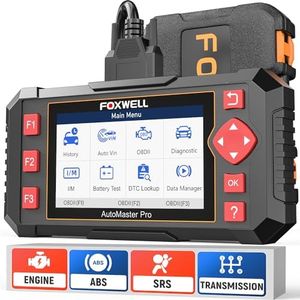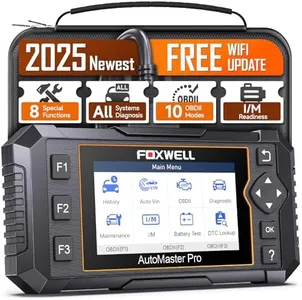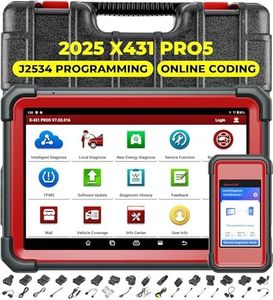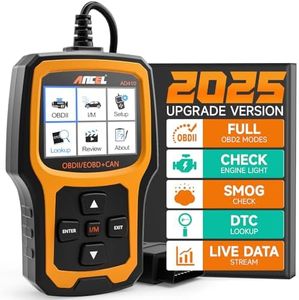We Use CookiesWe use cookies to enhance the security, performance,
functionality and for analytical and promotional activities. By continuing to browse this site you
are agreeing to our privacy policy
10 Best Auto Scan Tools
From leading brands and best sellers available on the web.Buying Guide for the Best Auto Scan Tools
Shopping for an auto-scan tool, also known as an OBD-II scanner, can be overwhelming because there are many features and types to consider. The best way to find the right one is to think about your needs: Do you only want to clear engine codes and check basic diagnostics, or do you want detailed live data and advanced diagnostics? Always consider the vehicle makes you’ll use the tool on, because some tools are more compatible with certain brands. Make sure you pick a tool that matches both your car and your technical comfort level. Understanding a few key specifications will guide you towards a tool that fits your needs and makes car maintenance a breeze.Vehicle CompatibilityVehicle compatibility tells you which cars or trucks the scan tool will work with. This is important because not all tools are made for every car make, model, and year. Most basic scan tools work with vehicles made after 1996 in the US, but if you own an older car or a foreign import, you need to double-check compatibility. Some tools are limited to certain regions or manufacturers, while advanced models might cover a wide range of vehicles. To pick the right one, check your car’s year and model and match it with the tool’s compatibility list—especially if you work with more than one car.
Diagnostic FunctionsDiagnostic functions refer to what the tool can actually do, such as reading and clearing codes, viewing live data, or performing advanced diagnostics like ABS or airbag scans. Entry-level scan tools only read and clear basic trouble codes and show limited information. Mid-level tools offer live sensor data and freeze frame info, while high-end ones can access module coding, service resets, and manufacturer-specific systems. If you’re a DIYer or casual user, basic and mid-level functions usually suffice. If you work on a variety of vehicles or do serious repairs, look for advanced functions.
Connection TypeThe connection type is how the tool connects to your car and how you see the information. Some scan tools have built-in screens and plug directly into your car’s OBD-II port (standalone), while others use Bluetooth or Wi-Fi to connect to your smartphone or tablet via an app (wireless). Standalone units are simple and ready to use out of the box, while wireless ones are more portable and can have richer displays. Pick based on your preference for using your own device versus a dedicated screen, and consider how and where you plan to use the tool.
User Interface and Ease of UseUser interface is about how easy the tool is to navigate and understand. Some tools use simple menus and buttons, while others rely on touchscreen controls or phone app designs. Tools aimed at professional mechanics may have more complex menus, while others simplify things for beginners. If you’re new to car diagnostics, choose a tool with a clear, straightforward menu and easy error code explanations. If you like technology and want more options, more advanced interfaces could be a better fit.
Update and SupportUpdate and support describes how you keep your scan tool’s software current and whether you get help if something goes wrong. Software updates are important because vehicle technology changes and new codes come out regularly. Basic tools may never need updates, while higher-end ones require updates (sometimes at a cost) to stay effective. Also, consider if the brand offers good customer support or help manuals. If you want your tool to last and stay useful, make sure it’s easy to update and backed by a solid support team.
